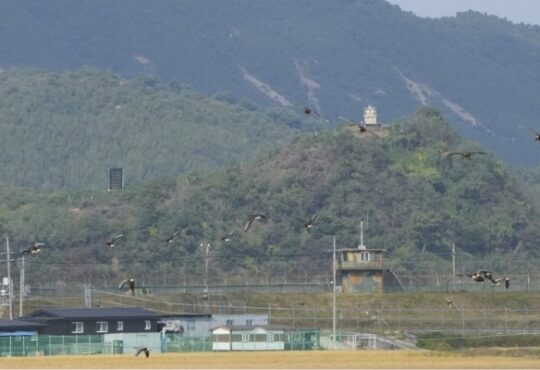
Radiation is a form of energy that can travel through space and matter. Radiation can have various sources, such as natural background radiation, medical procedures, industrial applications, nuclear power plants, or weapons. Radiation can also have various effects, depending on the type, amount, and duration of exposure. Some effects are beneficial, such as killing cancer cells or sterilizing medical equipment. Some effects are harmful, such as damaging DNA, causing mutations, or increasing the risk of cancer.
Radiation protection is the science and practice of protecting people and the environment from the harmful effects of radiation. Radiation protection involves three basic principles: justification, optimization, and limitation. Justification means that any radiation exposure should have a net benefit, outweighing the potential harm. Optimization means that any radiation exposure should be as low as reasonably achievable (ALARA), taking into account social and economic factors. Limitation means that any radiation exposure should not exceed the legal or regulatory limits, based on the best available scientific evidence.
Dosimetry is a key component of radiation protection, as it measures and monitors the amount of radiation that a person or an object receives. Dosimetry helps to assess the risk of exposure, to implement the appropriate protective measures, and to evaluate the effectiveness of those measures. Dosimetry also helps to identify areas where radiation levels are higher than normal and to take corrective actions to reduce the exposure. Dosimetry can also be used for research, education, and training purposes, to improve the knowledge and skills of radiation workers and professionals.
In this blog post, we will explain the importance of dosimetry in radiation protection, and how it can benefit you and your organization in case of a radiation emergency.
Dosimetry helps to prevent or minimize the health effects of radiation exposure.
One of the main goals of radiation protection is to prevent or minimize the health effects of radiation exposure, both in the short term and in the long term. The health effects of radiation exposure can vary depending on the type, amount, and duration of exposure, as well as the individual characteristics of the exposed person, such as age, gender, health status, and genetic factors. The health effects of radiation exposure can be classified into two categories: deterministic effects and stochastic effects.
Deterministic effects are the effects that occur when a certain threshold of exposure is exceeded, and the severity of the effects increases with the dose. Deterministic effects are usually acute, meaning that they appear shortly after exposure, and they are often irreversible, meaning that they cannot be cured or reversed. Examples of deterministic effects are skin burns, hair loss, nausea, vomiting, diarrhea, bleeding, infections, organ failure, or death.
Stochastic effects are the effects that occur when any amount of exposure increases the probability of an effect, but the severity of the effect does not depend on the dose. Stochastic effects are usually chronic, meaning that they appear long after exposure, and they are often latent, meaning that they may not be detected or diagnosed for years or decades. Examples of stochastic effects are cancer, leukemia, or genetic mutations.
Dosimetry helps to prevent or minimize the health effects of radiation exposure, by providing accurate and reliable information on the dose received by a person or an object. Dosimetry can help to determin if the dose is below or above the threshold for deterministic effects, and to estimate the risk of stochastic effects. Dosimetry can also help to decide on the appropriate medical treatment or intervention, such as decontamination, medication, or surgery, to reduce the damage or to enhance the recovery. Dosimetry can also help to monitor the health status and the biological effects of the exposed person, such as blood counts, chromosome aberrations, or biomarkers, to evaluate the outcome and the prognosis. If you’re interested in dosimetry tools or any other products from MIRA Safety, consider using a MIRA Safety Coupon to get discounts on your purchase.
Dosimetry helps to optimize radiation protection measures and practices.
Another goal of radiation protection is to optimize the radiation protection measures and practices, to ensure that the radiation exposure is as low as reasonably achievable (ALARA), taking into account social and economic factors. Radiation protection measures and practices can include various aspects, such as source control, exposure control, shielding, distance, time, personal protective equipment, ventilation, waste management, or emergency preparedness and response.
Dosimetry helps to optimize the radiation protection measures and practices, by providing feedback and guidance on the effectiveness and the efficiency of those measures and practices. Dosimetry can help to evaluate the performance and compliance of the radiation sources, the exposure devices, the shielding materials, the ventilation systems, or the waste disposal methods. Dosimetry can also help to assess the exposure levels and the dose rates in different areas, such as workplaces, public places, or environmental settings. Dosimetry can also help to design and implement the optimal radiation protection plan, such as the dose limits, the dose constraints, the dose optimization, the dose reduction, or the dose management.
Dosimetry helps to comply with the legal and regulatory requirements and standards.
A third goal of radiation protection is to comply with the legal and regulatory requirements and standards, that are established by the national or international authorities, based on the best available scientific evidence and ethical principles. Legal and regulatory requirements and standards can include various aspects, such as licensing, registration, authorization, inspection, enforcement, reporting, or auditing.
Dosimetry helps to comply with the legal and regulatory requirements and standards, by providing proof and documentation of the exposure and the dose received by a person or an object. Dosimetry can help to demonstrate that the exposure and the dose are within the legal or regulatory limits or to justify any deviation or exemption from those limits. Dosimetry can also help to report and record any exposure or dose incident, accident, or event, and to investigate and analyze the causes and the consequences of those incidents, accidents, or events. Dosimetry can also help to audit and verify the quality and ac curacy of the radiation protection measures and practices and to identify and correct any errors or deficiencies. If you’re interested in radiation safety equipment, consider checking out the latest Accessories coupon codes for great deals on high-quality products.
Conclusion
Dosimetry is a vital component of radiation protection, as it measures and monitors the amount of radiation that a person or an object receives. Dosimetry helps to prevent or minimize the health effects of radiation exposure, optimize radiation protection measures and practices, and comply with legal and regulatory requirements and standards. Dosimetry can also benefit you and your organization in case of a radiation emergency, by providing you with the information and the tools to protect yourself, your colleagues, your customers, and your environment from the harmful effects of radiation. Dosimetry can also help you to improve your knowledge and skills in radiation protection and to enhance your reputation and credibility in your field. Dosimetry is a valuable and indispensable asset for anyone who works with or near radiation sources, and for anyone who cares about their health and safety.








